Muscles are the engines that drive our bodies, enabling us to move, lift, and perform various activities in our daily lives. Understanding the most important muscle groups and how to strengthen them is vital for achieving overall strength, functionality, and well-being.
From the mighty glutes that power our strides to the powerful core that anchors our every move, each muscle plays a pivotal role in the way our body functions. But how do we strengthen these vital allies?
Let’s take a look at the major muscle groups and learn the finest science-backed techniques, workout regimens, and lifestyle changes that can help unlock the true potential of our bodies, transforming us into the best versions of ourselves.
Jump to:
- Why Is Strength Training Important
- The Most Important Muscle Groups in Our Body
- How to Split Your Muscle Groups to Build Muscle
- Which Muscles Should Be Trained Together?
- Effective Exercises That Target Certain Muscle Groups
- How Many Sets Should You Do for Each Muscle Group?
- Why Is It Important to Train Certain Muscle Groups Together?
- Frequently Asked Questions:
Why Is Strength Training Important
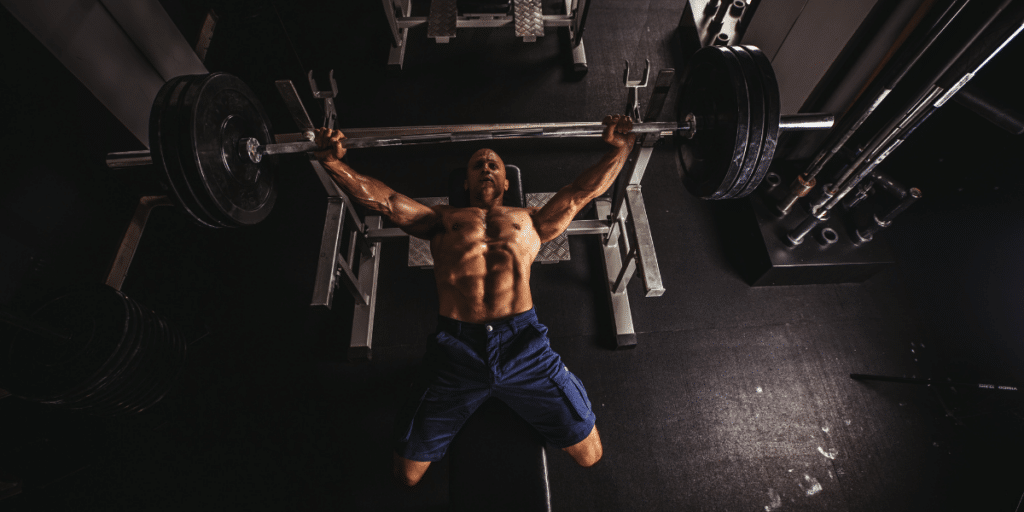
Strength training is of paramount importance for our overall health, fitness, and well-being. It involves using resistance, such as weights or body weight, to challenge and progressively overload muscles, leading to various physical and mental benefits. Let’s dive deeper into the key reasons why strength training is important.
- Muscle Strength and Tone: Strength training helps increase muscle mass, strength, and endurance. It leads to improved muscle tone, giving you a more sculpted and defined physique.
- Bone Health: Strength training stimulates bone growth and density, reducing the risk of osteoporosis and fractures, especially as you age.
- Metabolism Boost: Muscle is metabolically active tissue, and strength training can increase your basal metabolic rate. As you gain muscle, your body burns more calories at rest, supporting weight management and fat loss.
- Improved Physical Performance: Building strength enhances your physical capabilities, making daily tasks easier and improving sports performance.
- Joint Health and Flexibility: Strength training helps support the joints, reducing the risk of injury and improving joint flexibility and range of motion.
- Injury Prevention: Strong muscles and supportive connective tissues contribute to better body mechanics, reducing the risk of injuries during physical activities.
- Heart Health: Strength training, when combined with cardiovascular exercise, can positively impact heart health by reducing blood pressure and improving cholesterol levels.
- Insulin Sensitivity: Resistance training can enhance insulin sensitivity, helping to manage blood sugar levels and reduce the risk of type 2 diabetes.
- Mental Health Benefits: Strength training has been linked to improved mood, reduced anxiety, and decreased symptoms of depression.
- Functional Independence: Building strength ensures that you maintain functional independence as you age, allowing you to perform daily tasks with ease.
- Body Composition: Strength training can help you change your body composition by increasing muscle mass and reducing body fat.
- Confidence and Self-Esteem: As you see improvements in your strength and physical capabilities, it can boost your confidence and self-esteem.
- Longevity: Studies suggest that regular strength training is associated with increased longevity and a decreased risk of chronic diseases.
- Posture and Stability: Strengthening the muscles that support your spine and joints can lead to improved posture and stability, reducing the risk of back pain and other musculoskeletal issues.
The Most Important Muscle Groups in Our Body
Here are the different muscles groups:
Quadriceps (Front Thigh Muscles)
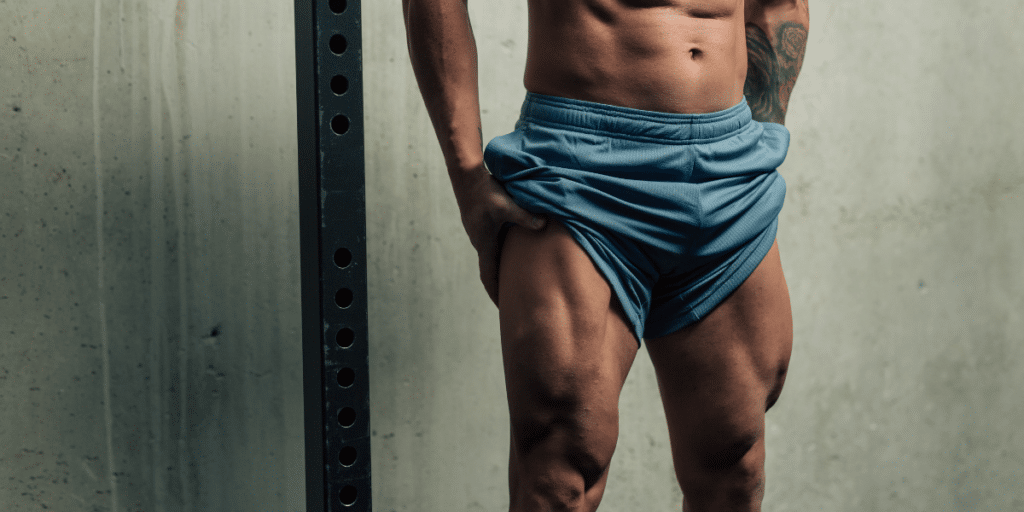
The quadriceps muscle, commonly known as the quads, is a group of four muscles located on the front of the thigh. These muscles work together to extend the knee joint and play a crucial role in various leg movements and activities.
The four muscles that make up the quadriceps are the following:
- Rectus Femoris: This muscle is the largest and runs down the middle of the thigh. It helps in knee extension and also assists in hip flexion.
- Vastus Lateralis: Positioned on the outer side of the thigh, it is responsible for extending the knee and provides stability to the patella (kneecap).
- Vastus Medialis: Located on the inner side of the thigh, it is also involved in knee extension and is essential for proper tracking of the patella during leg movements.
- Vastus Intermedius: This muscle lies deep within the thigh and, like the other vastus muscles, is involved in knee extension.
The quadriceps are crucial for activities such as walking, running, jumping, squatting, and climbing stairs. Regular quad workouts that target the quadriceps are essential for maintaining strong and stable knees and overall lower body strength.
Strengthening Exercise: Squats
- Stand with feet shoulder-width apart
- Lower your body as if sitting in a chair, keeping your back straight
- Push through your heels to stand back up
- Start with bodyweight squats and progress to barbell squats for added resistance
Hamstrings (Back Thigh Muscles)
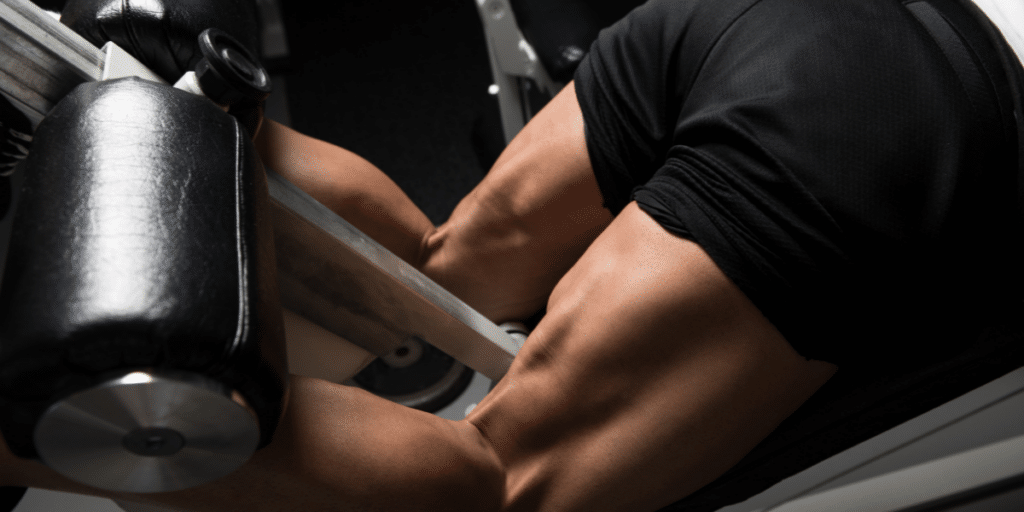
The hamstring muscles are located on the back of the thigh. These muscles run from the hip bone to just below the knee joint and play a significant role in leg movements and overall lower body strength.
The three muscles that make up the hamstrings are:
- Biceps Femoris: This muscle is the most lateral of the hamstrings and has two heads – a long head and a short head. It originates from the ischial tuberosity (a bony prominence in the pelvis) and inserts into the fibula bone in the lower leg.
- Semitendinosus: Positioned on the medial side of the back of the thigh, this muscle also originates from the ischial tuberosity and inserts into the upper part of the tibia bone in the lower leg.
- Semimembranosus: Located on the innermost part of the back of the thigh, this muscle also originates from the ischial tuberosity and inserts into the back of the tibia bone.
The hamstring muscles are responsible for knee flexion (bending the knee), and hip extension (moving the thigh backward), and also play a crucial role in stabilizing the knee joint during various movements. They are engaged in activities such as running, walking, jumping, and bending at the waist. Properly and regularly performing hamstring workouts is essential for overall lower body stability, injury prevention, and balanced muscle development.
Strengthening Exercise: Deadlifts
- Stand with feet hip-width apart and a barbell in front of you
- Hinge at the hips, keeping your back straight, and grip the barbell
- Lift the barbell by extending your hips and standing tall
- Lower the barbell back down with controlled movements
Glutes (Buttocks Muscles)

The glute muscles, often referred to as the glutes, are a group of three muscles located in the buttocks region of the human body. These muscles are the gluteus maximus, gluteus medius, and gluteus minimus.
The gluteus maximus is the largest and most superficial of the three. It forms much of the shape and bulk of the buttocks and plays a significant role in hip extension, allowing us to stand up from a sitting position, climb stairs, and perform activities like running and jumping.
The gluteus medius and gluteus minimus lie beneath the gluteus maximus and have important functions in stabilizing the pelvis during walking, running, and other lower-body movements.
Together, the gluteus muscles play a vital role in maintaining posture, providing stability and power for various movements, and are essential for overall lower body strength and functionality. Having a proper dedicated glute workout regimen can help prevent injuries and enhance your athletic performance.
Strengthening Exercise: Glute Bridges
- Lie on your back with your knees bent and feet flat on the floor.
- Push through your heels to lift your hips off the ground, squeezing your glutes.
- Lower your hips back down, and repeat for several reps.
Abdominal Muscles
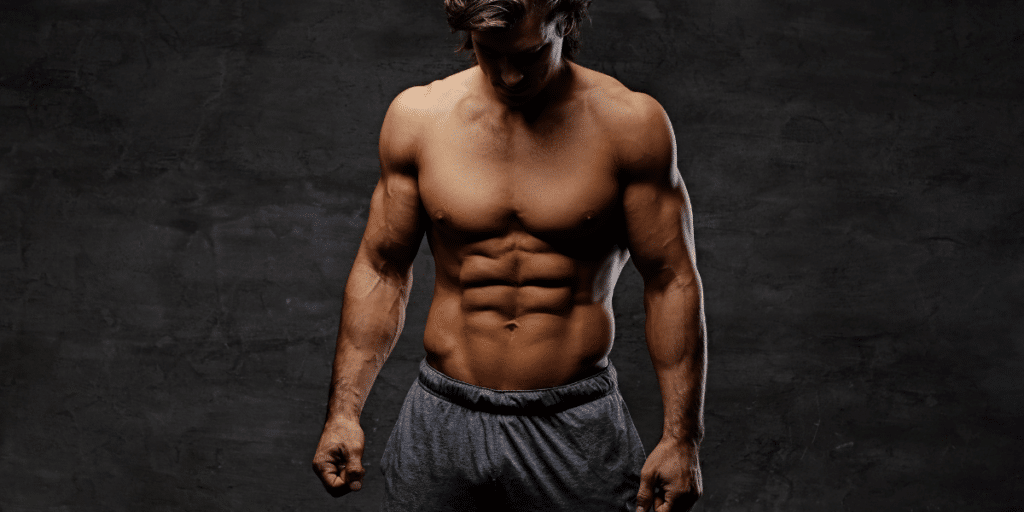
The abdominal muscles, often referred to as the “core muscles,” form the central region of the body and play a fundamental role in stabilizing and supporting various movements. The core is not just a single muscle but a complex group of muscles that work together to provide stability and strength to the spine, pelvis, and torso.
The major muscles of the core include:
- Rectus Abdominis: Located in the front of the abdomen, this muscle is commonly known as the “six-pack.” It aids in flexing the spine and helps in movements like crunches.
- Transverse Abdominis: This deep muscle lies beneath the rectus abdominis and acts as a natural corset, providing stability to the spine and pelvis.
- Internal and External Obliques: These muscles are located on the sides of the abdomen and help in rotation and lateral flexion of the spine.
- Multifidus: Positioned along the spine, this muscle helps with spinal stability and posture.
- Erector Spinae: The spinal erectors run parallel to the spine and assist in back extension and maintaining an upright posture.
The core muscles are not limited to the front and sides of the abdomen; they also include muscles in the back and around the hips. A strong and well-developed core is essential for maintaining proper posture, preventing lower back pain, enhancing athletic performance, and providing a solid foundation for all movements, from everyday tasks to more intense exercises.
Engaging in core-strengthening exercises, such as planks, bridges, and rotational movements, can help improve core strength and stability.
Strengthening Exercise: Plank
- Assume a push-up position with forearms on the ground
- Engage your core and keep your body in a straight line from head to heels
- Hold the position for as long as you can, gradually increasing the duration
Pectorals (Chest Muscles)

The pectorals, commonly known as the chest muscles or “pecs,” are a group of muscles located in the upper front part of the torso. These muscles are essential for various movements involving the arms and shoulders and play a significant role in upper body strength and stability.
The pectoral muscles consist of two main parts:
- Pectoralis Major: This is the larger and more visible muscle of the chest. It originates from the clavicle (collarbone), sternum (breastbone), and ribs and inserts into the upper arm bone (humerus). The pectoralis major is responsible for actions such as arm flexion (bringing the arm forward), horizontal adduction (moving the arm across the body), and medial rotation (inward rotation) of the arm.
- Pectoralis Minor: This smaller muscle lies beneath the pectoralis major and is located near the upper ribs. It aids in stabilizing the scapula (shoulder blade) and assists in pulling the shoulder blade forward and downward.
The pectoral muscles are engaged in various upper-body exercises, such as push-ups, bench presses, chest exercises, and dips. Strengthening the pectoral muscles can be done with the proper chest workout routine which will not only enhance the appearance of the chest but will also improve functional movements, pushing power, and overall upper body strength. Properly developed and balanced pectorals are essential for a well-rounded and powerful upper body.
Strengthening Exercise: Push-Ups
- Start in a plank position with hands slightly wider than shoulder-width apart
- Lower your body by bending your elbows, keeping them close to your sides
- Push back up to the starting position
Deltoids (Shoulder Muscles)
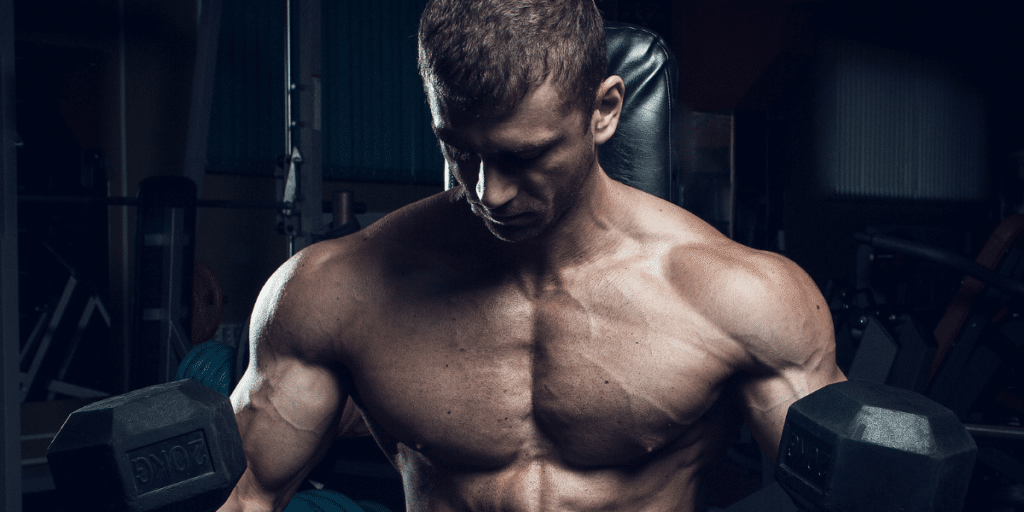
The delts, commonly known as the shoulder muscles, are a group of three distinct muscles that give the shoulders their rounded shape and play a crucial role in various upper body movements. These muscles are named after the Greek letter delta (∆) due to their triangular shape when well-developed.
The three parts of the deltoid muscles are:
- Anterior Deltoid: Located on the front of the shoulder, this muscle is responsible for shoulder flexion, which involves lifting the arm forward and upward.
- Medial Deltoid: Positioned on the side of the shoulder, this muscle is responsible for shoulder abduction, which involves lifting the arm out to the side away from the body.
- Posterior Deltoid: Situated on the back of the shoulder, this muscle is responsible for shoulder extension, which involves moving the arm backward.
The delts are involved in a wide range of upper body movements, including lifting objects, reaching overhead, throwing, and pushing. Strong and well-developed delts are essential for shoulder stability, improved performance in activities that involve the arms, and overall upper body strength. Exercises such as shoulder presses, lateral raises, and rear deltoid flyes are commonly used to target and strengthen the deltoid muscles. Proper training of the delts can help prevent shoulder injuries and promote balanced muscle development in the upper body.
Strengthening Exercise: Shoulder Press
- Sit or stand with dumbbells at shoulder height, palms facing forward
- Press the dumbbells overhead, extending your arms fully
- Lower the weights back down with control
Latissimus Dorsi (Lats)
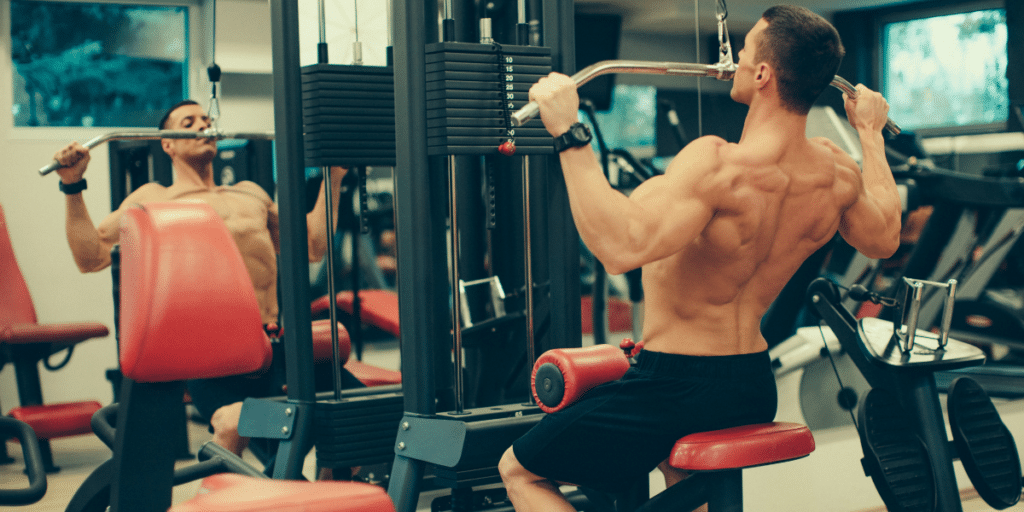
The latissimus dorsi, commonly known as the “lats,” is a large, flat, and triangular muscle located on the back, extending from the lower back to the upper arm. The lats are the broadest muscles in the human body and play a crucial role in a variety of movements involving the shoulders, back, and arms.
Originating from the lower spine (thoracolumbar fascia) and the back of the pelvis (posterior iliac crest), the lats run upward and outward, converging towards the upper arm bone (humerus). They are responsible for several important actions, including:
- Shoulder Extension: The lats are powerful extensors of the shoulder joint, allowing you to pull your arm down and back behind your body.
- Shoulder Adduction: When the arm is out to the side, the lats are involved in bringing it closer to the midline of the body.
- Medial Rotation of the Arm: The lats contribute to the internal rotation of the arm when it is close to the body.
- Assisting in Breathing: In certain situations, the lats help in forced inhalation, such as during heavy breathing or when lifting heavy weights.
Engaging the latissimus dorsi is essential in various bodyweight exercises, such as pull-ups, rows, lat pulldowns, and swimming strokes. Strengthening these muscles not only enhances back aesthetics but also improves overall upper body strength, posture, and functional movements involving the arms and shoulders. Well-developed lats contribute to a well-rounded and powerful physique while providing stability and support to the upper body.
Strengthening Exercise: Pull-Ups/Chin-Ups
- Grip a pull-up bar with palms facing away (pull-ups) or palms facing toward you (chin-ups)
- Hang with arms fully extended, then pull your body up until your chin is above the bar
- Lower yourself back down with control
Trapezius (Traps)
The trapezius, commonly known as the “traps,” is a large and triangular-shaped muscle located on the back of the neck and upper back. It is one of the most prominent muscles in the upper body and plays a crucial role in various movements involving the head, neck, and shoulders.
The trapezius muscle has a broad origin, with fibers spanning from the base of the skull, the cervical and thoracic vertebrae of the spine, and the spine of the scapula (shoulder blade). The fibers of the traps converge towards the midpoint of the upper back, forming a distinct triangular pattern.
The trapezius muscle performs several important actions:
- Neck Extension: The upper fibers of the traps help in extending the neck, allowing you to look up.
- Neck Flexion: The lower fibers of the traps assist in flexing the neck, helping you lower your head towards the chest.
- Scapular Elevation: The traps are powerful elevators of shoulder blades, allowing you to shrug your shoulders.
- Scapular Retraction: The middle fibers of the traps pull the shoulder blades back toward the spine.
- Scapular Depression: The lower fibers of the traps help in lowering the shoulder blades downward.
The traps are engaged in various activities involving the upper body, such as carrying heavy loads, maintaining proper posture, and movements that require shoulder and neck stabilization. Exercises like shoulder shrugs, rows, and scapular retractions target and strengthen the trapezius muscles. Well-developed traps not only contribute to a strong and balanced upper body but also play a significant role in supporting the neck and shoulders during daily movements and athletic activities.
Strengthening Exercise: Dumbbell Shrugs
- Stand with dumbbells at your sides, palms facing inward
- Shrug your shoulders upward as if trying to touch your ears with them
- Lower your shoulders back down with control
Biceps and Triceps (Arm Muscles)
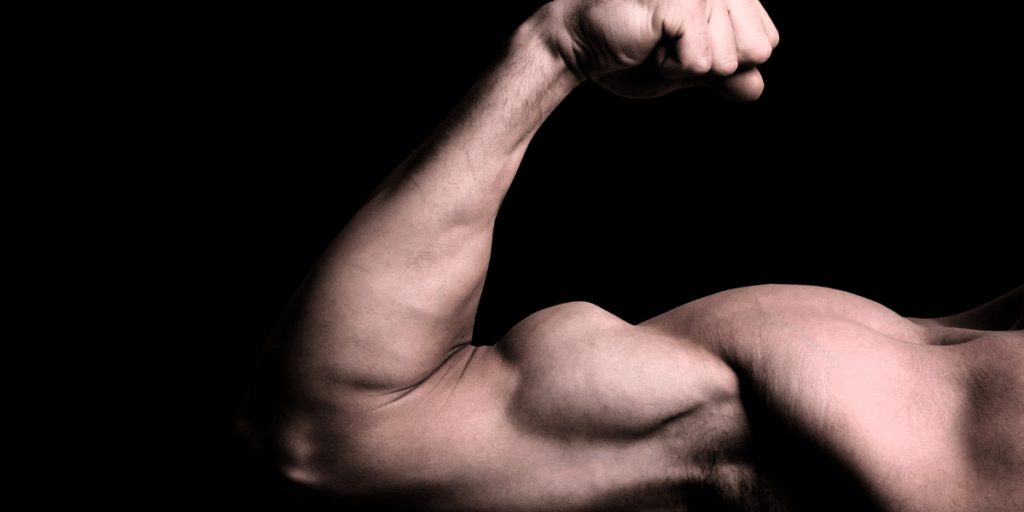
The biceps and triceps are the two major muscle groups located in the upper arm, collectively known as the arm muscles. They have opposing functions and work together to control movements at the elbow joint.
Biceps Brachii (Biceps)
The biceps brachii, commonly known as the biceps, is a two-headed muscle located on the front of the upper arm. It originates from the scapula (shoulder blade) and inserts into the radius bone of the forearm. The primary function of the biceps muscle is elbow flexion, which involves bending the arm at the elbow joint, bringing the hand closer to the shoulder.
The biceps also play a secondary role in supination, the motion of turning the palm upward. Exercises like bicep curls and chin-ups are popular for targeting and strengthening the biceps.
Triceps Brachii (Triceps)
The triceps brachii, commonly known as the triceps, is a three-headed muscle located on the back of the upper arm. It originates from the scapula and humerus bone of the upper arm and inserts into the ulna bone of the forearm. The primary function of the triceps is elbow extension, which involves straightening the arm at the elbow joint.
Unlike the biceps, the triceps are not involved in supination. It’s essential to perform specific tricep workouts such as triceps dips, triceps pushdowns, and overhead triceps extensions for targeting and strengthening the triceps.
Together, the biceps and triceps are responsible for various arm movements, such as lifting, pushing, and pulling. Properly developed and balanced arm muscles are essential for functional movements and can improve overall upper body strength and aesthetics.
Strengthening Exercise: Biceps Curls and Tricep Dips
- Bicep Curls: Stand with dumbbells at your sides, palms facing forward. Curl the dumbbells up toward your shoulders.
- Tricep Dips: Sit on a bench or chair with hands gripping the edge. Lower your body by bending your elbows, then push back up.
All in all, understanding the most important muscle groups in the human body and how to strengthen them is fundamental for achieving overall strength, functionality, and a balanced physique. Incorporate compound movements into your exercise routine to engage multiple muscle groups simultaneously.
Remember that proper form and technique are essential to avoid injuries and maximize results. Additionally, give your muscles time to rest and recover between resistance exercises to allow for proper growth and adaptation.
How to Split Your Muscle Groups to Build Muscle

Splitting your body parts appropriately is crucial for effective muscle building and ensuring that you provide sufficient recovery time for each muscle group. There are several popular body splits (PPL, bro split, full-body…), and the choice depends on your fitness level, training frequency, and personal preferences.
Here are some common muscle-building training splits.
Full-Body Workout (3 times a week)
This split involves working all major muscle groups in a single session, typically performed three times a week. It’s great for beginners or those with limited time for optimal muscle growth.
Sample Full-Body Workout
- Squats
- Bench Press
- Bent-Over Rows
- Shoulder Press
- Deadlifts
- Bicep Curls
- Tricep Dips
- Planks
Upper/Lower Split (4 times a week)
This split divides workouts into upper body and lower body days, with each trained twice a week. It provides more focus on specific muscle groups and allows for adequate recovery.
Sample Upper/Lower Split
- Upper Body Day 1:
- Bench Press
- Pull-Ups or Rows
- Overhead Press
- Bicep Curls
- Tricep Dips
- Lower Body Day 1:
- Squats
- Deadlifts
- Leg Press
- Leg Curls
- Calf Raises
- Upper Body Day 2:
- Incline Bench Press
- Lat Pulldowns
- Shoulder Raises
- Hammer Curls
- Skull Crushers
- Lower Body Day 2:
- Lunges
- Romanian Deadlifts
- Leg Extensions
- Glute Bridges
- Seated Calf Raises
Push/Pull/Legs Split (6 times a week)
This split focuses on dividing workouts based on pushing movements (chest, shoulders, and triceps), pulling movements (back and biceps), and leg exercises. It allows for more volume and specialization for each muscle group combination.
Sample Push/Pull/Legs Split
- Push Day:
- Bench Press
- Shoulder Press
- Dips
- Tricep Extensions
- Pull Day:
- Pull-Ups or Rows
- Deadlifts
- Bicep Curls
- Face Pulls
- Leg Day:
- Squats
- Lunges
- Leg Press
- Leg Curls
- Calf Raises
Body-Part Split (5 or 6 times a week)
This advanced training split targets individual muscle groups on different days, allowing for maximum focus and intensity. It is commonly used by experienced lifters.
Sample Body-Part Split
- Monday: Chest
- Bench Press
- Incline Dumbbell Press
- Flyes
- Tuesday: Back
- Pull-Ups or Lat Pulldowns
- Rows (Barbell or Dumbbell)
- Deadlifts
- Wednesday: Legs
- Squats
- Leg Press
- Leg Extensions
- Leg Curls
- Calf Raises
- Thursday: Shoulders
- Shoulder Press
- Lateral Raises
- Front Raises
- Rear Delt Flyes
- Friday: Arms
- Bicep Curls
- Hammer Curls
- Tricep Dips
- Skull Crushers
At the end of the day, the ideal workout split for muscle building depends on your training experience, schedule, and goals. Beginners can start with full-body or upper/lower splits, while more advanced lifters may benefit from the push/pull/legs or body-part split.
Don’t forget to have rest days and listen to your body to prevent overtraining and support muscle recovery. Whatever training split you choose, consistency and progressive overload (gradually increasing weights or intensity) are key to achieving muscle growth and strength gains. Always consult with a fitness professional to tailor a program that suits your needs and abilities.-
Which Muscles Should Be Trained Together?
Certain muscle groups in the body naturally work together to perform specific movements. When training, it’s beneficial to pair these muscle groups to maximize efficiency and ensure balanced strength development.
Chest and Triceps
The chest muscles (pectoralis major) and triceps (located on the back of the upper arms) are frequently used in pushing movements like bench presses and push-ups. Pairing these muscles in your triceps and chest exercises allows for efficient training and supports upper-body strength development.
Back and Biceps
The back muscles (latissimus dorsi, rhomboids, and trapezius) and biceps (located on the front of the upper arms) are involved in pulling movements such as rows and pull-ups. Combining these muscle groups in your workout routine helps build well-rounded upper body strength and balance.
Quadriceps and Hamstrings
The quadriceps (front of the thighs) and hamstrings (back of the thighs) are opposing muscle groups that work together to facilitate leg movements. Exercises like squats and barbell lunges or dumbbell lunges engage both muscle groups, providing overall lower-body strength and stability.
Shoulders and Upper Back
The shoulder muscles (deltoids) and upper back muscles (trapezius, rhomboids) are involved in various shoulder movements. Training them together helps in achieving better posture, shoulder stability, and balanced upper-body strength.
Core and Stabilizer Muscles
The core muscles (rectus abdominis, obliques, transverse abdominis) and stabilizer muscles (such as those in the lower back) play a significant role in stabilizing the spine during exercises. Strengthening them together contributes to improved core strength and overall functional fitness.
Quads and Calves
The quadriceps and calf muscles (gastrocnemius and soleus) work together during lower-body movements like running and jumping. Combining exercises that target both muscle groups helps in building balanced lower body strength.
Chest and Shoulders
The chest muscles and shoulder muscles (deltoids) are often involved in pressing movements. Training them together can enhance overall upper body strength and performance.
It’s important to note that while pairing muscle groups can be beneficial, it’s equally essential to allow adequate rest and recovery for each muscle group. Overtraining can lead to muscle fatigue and increase the risk of injury. Additionally, incorporating compound movements that engage multiple muscle groups simultaneously is an effective way to ensure that various muscles are working together synergistically during your workouts.
As with any workout routine, it’s advisable to consult with a fitness professional to design a program that aligns with your fitness goals, level of experience, and individual needs. A well-balanced and thoughtfully designed workout routine can optimize muscle development and overall physical performance.
Effective Exercises That Target Certain Muscle Groups
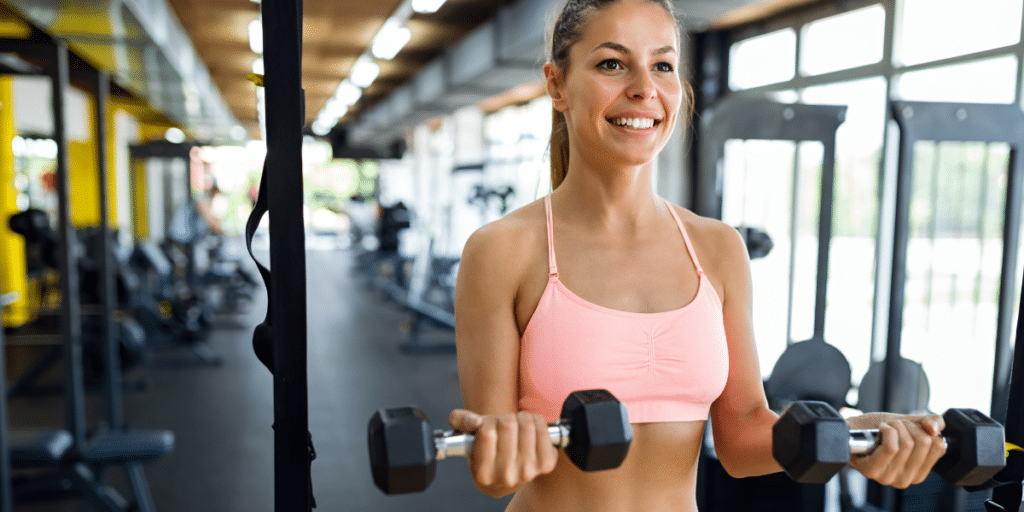
Here’s a list of exercises that target specific muscle groups.
1. Chest:
- Bench Press
- Dumbbell Flyes
- Push-Ups
- Cable Chest Press
- Chest Dips
2. Back:
- Pull-Ups
- Bent-Over Rows
- Deadlifts
- Lat Pulldowns
- Seated Cable Rows
3. Shoulders:
- Shoulder Press (Overhead Press)
- Dumbbell Lateral Raises
- Front Raises
- Rear Delt Flyes
- Upright Rows
4. Biceps:
- Bicep Curls (Barbell, Dumbbell, or Cable)
- Hammer Curls
- Concentration Curls
- Preacher Curls
- Chin-Ups
5. Triceps:
- Tricep Dips
- Skull Crushers (Lying Tricep Extensions)
- Tricep Pushdowns
- Close-Grip Bench Press
- Overhead Tricep Extension
6. Legs:
- Squats (Barbell, Dumbbell, or Bodyweight)
- Lunges (Forward, Reverse, or Walking)
- Leg Press
- Leg Extensions
- Leg Curls
7. Glutes:
- Hip Thrusts
- Bulgarian Split Squats
- Deadlifts
- Glute Bridges
- Cable Kickbacks
8. Core:
- Planks (Front Plank, Side Plank, or Reverse Plank)
- Russian Twists
- Bicycle Crunches
- Hanging Leg Raises
- Ab Wheel Rollouts
9. Calves:
- Standing Calf Raises
- Seated Calf Raises
- Donkey Calf Raises
- Calf Raises on Leg Press Machine
- Jump Rope (for calf endurance)
Remember that proper form and technique are crucial to avoid injuries and get the most out of each exercise. Additionally, it’s essential to vary your workouts and incorporate different exercises to target the same muscle group from different angles and stimulate muscle growth effectively. Always consult with a fitness professional if you’re new to strength training or have any specific training goals or medical considerations.
How Many Sets Should You Do for Each Muscle Group?
The number of sets and exercises you should perform for each muscle group depends on various factors, including your training experience, fitness goals, time availability, and recovery capacity.
Sets per Muscle Group
- Beginners: If you are new to strength training, start with 2-3 sets per exercise for each muscle group. This allows you to adapt to the exercises and build a foundation of strength.
- Intermediate: For intermediate lifters, 3-4 sets per exercise for each muscle group is a good starting point. This provides enough volume to stimulate muscle growth and strength gains.
- Advanced: Advanced lifters can benefit from 4-5 sets or more per exercise for each muscle group. Higher volume training can help break plateaus and challenge muscles for continued growth.
Exercises per Muscle Group
- Beginners: Focus on compound exercises that engage multiple muscle groups simultaneously. For each muscle group, aim for 1-2 exercises. For example, for the chest, you might perform bench presses and push-ups.
- Intermediate: Intermediate lifters can include 2-3 exercises per muscle group. You can add variations of the primary compound exercises, along with isolation exercises that target specific muscle fibers.
- Advanced: Advanced lifters can incorporate 3-4 exercises or more for each muscle group. This can include different angles, grips, and resistance levels to target the muscles comprehensively.
Repetitions (Reps) and Intensity
- For muscle growth (hypertrophy), aim for 6-12 repetitions per set. This rep range is known to elicit muscle hypertrophy effectively.
- For strength gains, focus on lower repetitions (1-6 reps) with higher intensity (heavier weights). This type of training helps improve neuromuscular efficiency and maximal strength.
Rest Periods
- For hypertrophy training, rest for 60-90 seconds between sets to allow for sufficient recovery while maintaining muscle tension.
- For strength training, longer rest periods of 2-3 minutes between sets are recommended to allow for full recovery and maximal effort in each set.
Frequency
- For beginners, 2-3 days per week of full-body or upper/lower split workouts can be sufficient.
- Intermediate and advanced lifters may benefit from 4-6 days per week, using various workout splits to target different muscle groups.
Progressive Overload
Regardless of your level, progressively increasing the weights and/or the difficulty of exercises over time is essential for continuous muscle growth and strength development.
At the end of the day, designing an effective workout program involves personalizing it to your goals, fitness level, and preferences. Balancing the number of sets and exercises for each muscle group, along with proper intensity and rest periods, is key to maximizing results and preventing overtraining. Listen to your body and allow sufficient time for recovery between workouts.
Why Is It Important to Train Certain Muscle Groups Together?
Working out the right muscle groups together is essential for several reasons that optimize your workout efficiency and support your overall fitness goals.
- Balanced Muscle Development: Pairing complementary muscle groups ensures that all major muscles in your body receive adequate attention and stimulation. This balanced approach prevents muscle imbalances and reduces the risk of overworking certain muscles while neglecting others.
- Efficient Workouts: Training related muscle groups together allows you to perform exercises that engage multiple muscles simultaneously. This not only saves time but also maximizes the effectiveness of your workouts, leading to better results in less time.
- Enhanced Recovery: When you target specific muscle groups together, you allow ample time for each muscle to recover before training them again. Adequate recovery is crucial for muscle growth and overall fitness progress.
- Improved Performance: Training complementary muscle groups can lead to improved coordination, stability, and strength during compound movements. For example, having strong back muscles can support better performance during bench presses or overhead presses.
- Injury Prevention: Working out muscle groups together helps ensure that all supporting muscles are adequately developed. This reduces the risk of injuries, as strong muscles support joints and stabilize movements, protecting against strains and sprains.
- Synergistic Effect: Pairing muscle groups that work together synergistically allows you to perform exercises with greater efficiency and range of motion. For instance, training chest and triceps together allows you to perform push-ups and bench presses more effectively.
- Mental Focus: By focusing on specific muscle groups during your workouts, you can mentally engage better and maintain concentration throughout the training session, leading to more productive workouts.
Frequently Asked Questions:
What exercises work the most muscle groups?
Exercises that work the most muscle groups are compound exercises. These movements involve multiple joints and muscle groups, making them highly effective for engaging large areas of the body at once. Some examples of compound exercises include squats, deadlifts, lunges, bench presses, pull-ups, and rows. These exercises recruit not only the primary muscles targeted but also several stabilizing and synergistic muscles, providing a comprehensive and efficient workout.
Is it OK to work multiple muscle groups?
Yes, it is generally okay to work multiple muscle groups in a single workout session. In fact, incorporating compound exercises that engage multiple muscle groups can be highly beneficial for overall strength and fitness gains. Working multiple muscle groups together saves time, increases the intensity of the workout, and stimulates the body to release more growth-promoting hormones. However, it’s essential to allow adequate rest and recovery for each muscle group. Overtraining can lead to fatigue, increased risk of injury, and hinder progress. To avoid these issues, it’s best to have a well-designed workout routine that targets different muscle groups on different days and includes rest days in between intense workouts.
Which muscles should not be trained together?
While it is generally safe to work multiple muscle groups together, some muscles should not be trained together consecutively or on consecutive days. For example, training chest and triceps on the same day is common, but it’s crucial to avoid overloading these muscle groups, especially if they were already worked intensely in the previous session. Similarly, training biceps and back together can put excessive strain on the arms and might compromise the effectiveness of the exercises. It’s essential to plan workout routines strategically to give each muscle group adequate time to recover between sessions.
In summary, compound exercises work the most muscle groups and are highly effective for overall strength and fitness. It is generally okay to work multiple muscle groups together, but proper planning and rest days are essential to prevent overtraining. When designing a workout routine, it’s important to avoid training muscle groups consecutively that may compromise their recovery and performance. A well-balanced and properly structured workout plan will help optimize muscle development, minimize the risk of injuries, and support overall fitness goals.















